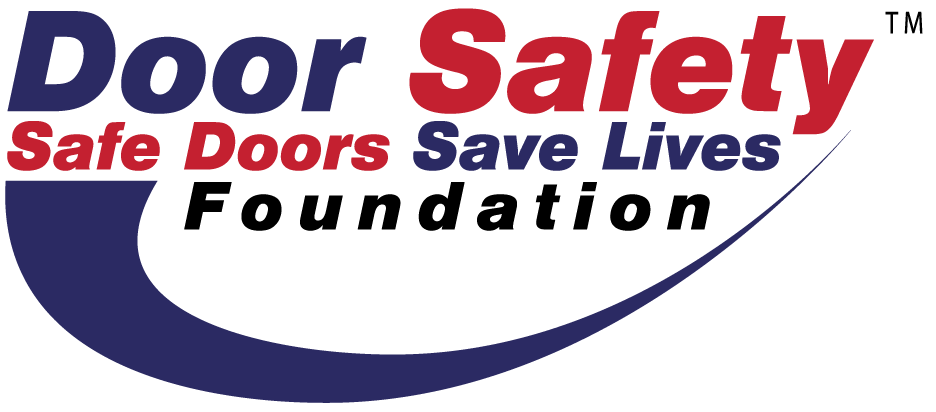This article was originally posted by Keith E. Pardoe on www.pardoeconsultingllc.com on November 6, 2014.
This is the second in a series of articles that highlight and discuss changes that occurred in the 2015 edition of NFPA 101, Life Safety Code that affect egress, fire, and security door assemblies.
As mentioned in the first article in this series, the conventions used to indicate changes that were made between the edition that immediately precedes the now-current edition have been discontinued. Consequently, users need to thoroughly compare content of the new edition to the former edition to discover the changes that were made. Such is the case with Section 7.2.1.15 Inspections of Door Openings.
At first glance, Section 7.2.1.15 appears to be unchanged, but upon closer study there are a few subtle, but significant changes that merit discussion. For example, in the 2012 edition paragraph 7.2.1.15.2 required fire-rated door assemblies to be inspected in accordance with NFPA 80, Standard for Fire Doors and Other Opening Protectives and smoke door assemblies (aka, smoke leakage-rated door assemblies) to be inspected and tested in accordance with NFPA 105, Standard for Smoke Door Assemblies and Other Opening Protectives. In the 2015 edition, these requirements have been moved to sections under Chapter 8, Features of Fire Protection. Paragraph 8.2.2.4(3) states, "Door assemblies shall be installed and maintained in accordance with NFPA 105, Standard for Smoke Door Assemblies and Other Opening Protectives." (Underlining is added to indicate new content.)
While we are looking at 8.2.2.4 it bears mentioning that item (4) that appeared in the 2012 edition, which required smoke door assemblies to be inspected in accordance with 7.2.1.15, has been deleted. The reason for deleting former item (4) is that the requirements of Section 7.2.1.15 apply only to the doors that are specifically listed in that section, which does not include all of the smoke-leakage doors that need to be inspected.
A new paragraph 8.3.3.13 addresses the inspection of fire-rated door assemblies; it states, "Fire-rated door assemblies shall be inspected and tested in accordance with NFPA 80, Standard for Fire Doors and Other Opening Protectives."
Finally, a new Section 8.8 Inspection and Testing of Door Assemblies was added to Chapter 8 and is excerpted in its entirety for your convenience:

The annex comment in A.8.8 explains that these new inspection requirements are intended to apply to all occupancies where door assemblies are installed in smoke barriers, smoke partitions, and in hazardous areas. These door assemblies are not necessarily covered by the requirements of 8.2.2.4(3) or 8.3.3.13. In other words, some of the door assemblies covered by 8.3.3.13 are not fire-rated and are not considered to be smoke-leakage rated door assemblies, but they are required to be self-closing or automatic-closing to limit the transfer of smoke.
Perhaps the most important point to remember regarding the moving of these requirements to Chapter 8, Features of Fire Protection is that these requirements become mandatory for all occupancies where fire-rated, smoke-leakage rated, and self-closing/automatic-closing doors are required, whereas the requirements of Section 7.2.1.15 are only applicable "Where required by Chapters 11 through 43."
In addition to the changes in 7.2.1.15 mentioned, there are several other changes that should be noted. The reference to NFPA 80 that appeared in the 2012 edition in paragraph 7.2.1.15.3 was deleted due to moving the inspection requirements for fire-rated doors to paragraph 8.3.3.13. Since the reference to NFPA 80 was deleted, new paragraphs 7.2.1.15.2.1, 7.2.1.15.2.2, and 7.2.1.15.2.3 were added to include provisions for the inspection and testing interval to be performed under a performance-based program. The annex comment for 7.2.1.15.2 directs users to Annex J in NFPA 80 for the description of a performance-based inspection and testing program.
Lastly, two new inspection items were added to the checklist under paragraph 7.2.1.15.6; items (12) and (13) respectively. Item (12) states. "where required by 7.2.2.5.5.7, door hardware markings is present and intact." Item (13) states, "Emergency lighting on access-controlled egress doors and doors equipped with delayed-egress locking systems is present and functioning in accordance with section 7.9." The changes covered in this article will have a significant affect on the inspection requirements of door assemblies when the 2015 edition is adopted by a jurisdiction. I recommend that you purchase a copy of the 2015 edition of NFPA 101 or access it through the NFPA website (you can do that for free) and read the above referenced sections and paragraphs (including the related annex comments) for yourself for the full context.
Be sure to check back soon for the next installment in this series of articles.
